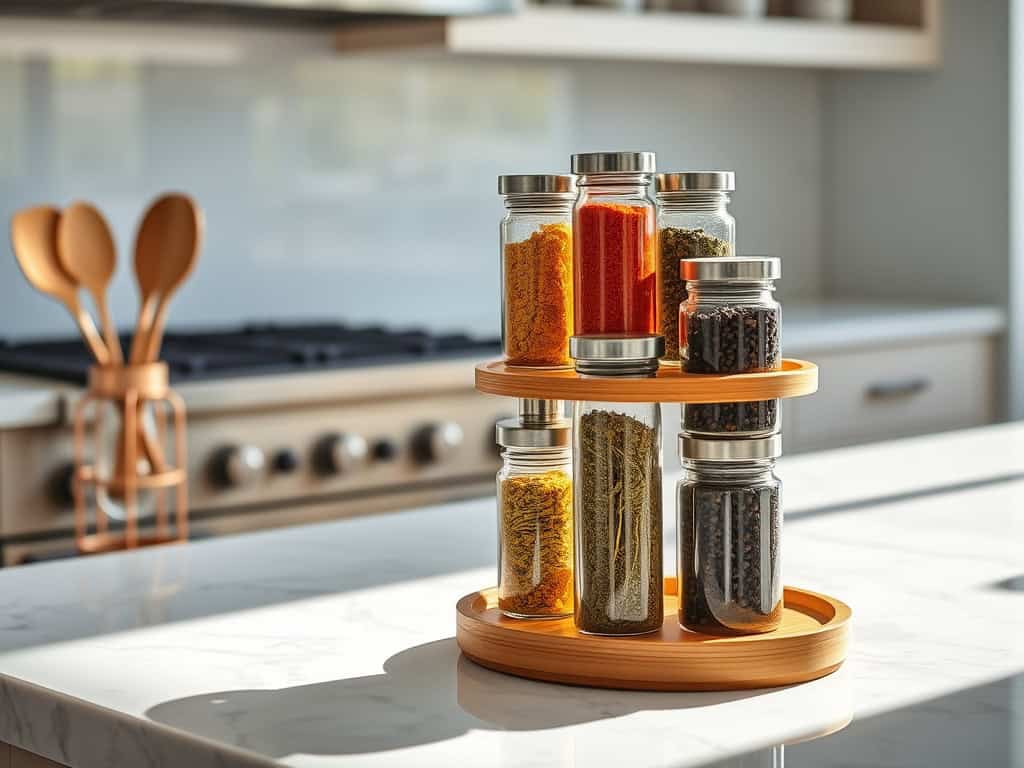You might think organizing spices is a boring chore, but it’s actually the secret weapon of efficient home cooks! I’ve learned through years of kitchen experiments that a well-organized seasoning collection can transform your cooking from chaotic to confident. Whether you’re whipping up a quick weeknight dinner or tackling a complex recipe, having your spices in order saves precious minutes and prevents those frustrating “where’s the cumin?” moments. Let me share some game-changing tips that’ll revolutionize your kitchen setup.
Alphabetize Your Spices for Easy Location
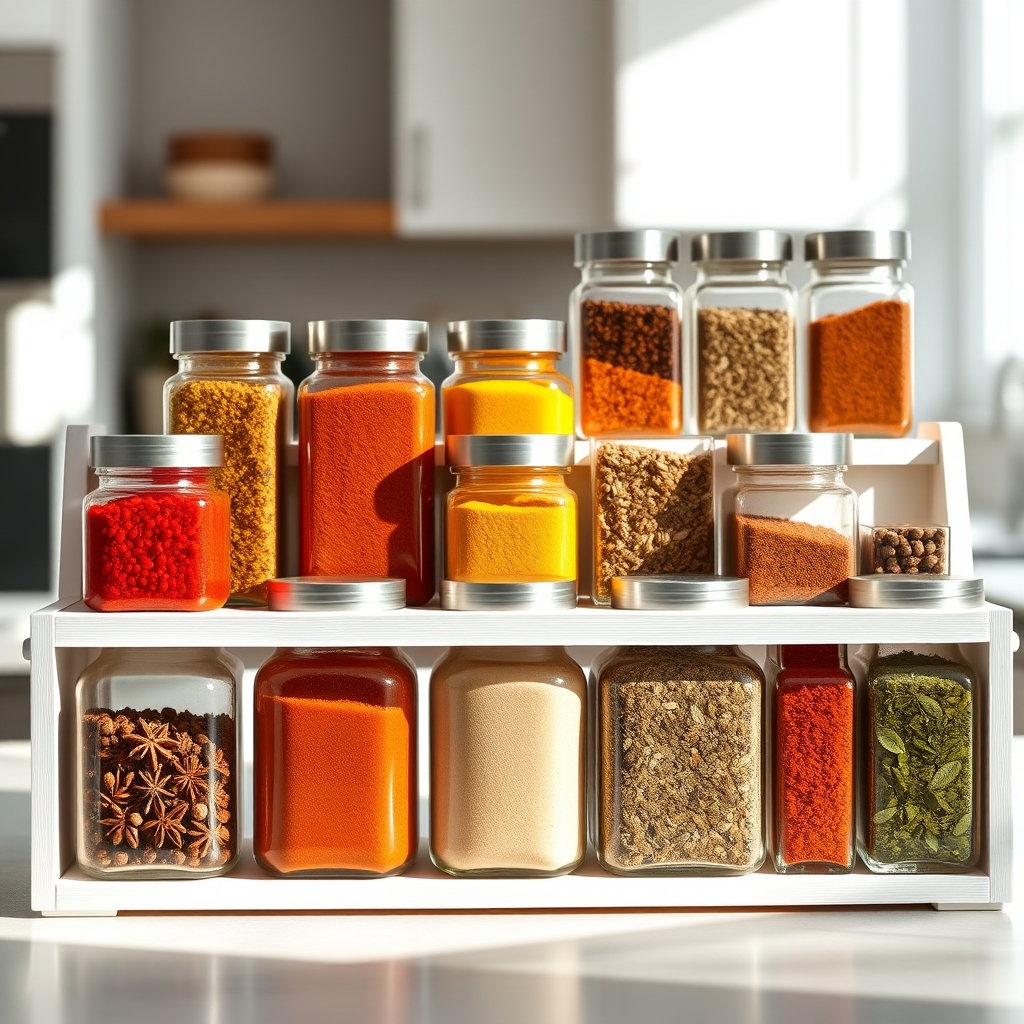
A well-organized spice collection is essential for any functional kitchen, saving precious minutes during meal preparation and preventing the frustration of searching through cluttered cabinets. When spices are alphabetized, you can quickly locate exactly what you need, reducing the chance of purchasing duplicates and ensuring your seasonings stay fresh through regular use.
Alphabetical organization transforms your spice storage from chaos to efficiency, creating a system that any family member or guest cook can navigate. This method works regardless of your storage solution – whether spices are in a drawer, cabinet, or rack – and maintains its effectiveness even as your collection grows.
Required Items:
- Labels or label maker
- Clean cloth
- Small containers or matching spice jars
- Storage solution (drawer organizer, rack, or cabinet)
- Marker or pen
- Paper for inventory
- Timer (optional)
Begin by removing all spice containers from their current location and placing them on a clean, flat surface. Check each container’s expiration date and discard any outdated items. Wipe each container clean and ensure all labels are legible. Transfer spices to matching containers if desired, creating a uniform look.
Sort all containers alphabetically, regardless of size or frequency of use. Position them in your chosen storage space, maintaining alphabetical order from left to right and front to back. If using multiple shelves or drawers, continue the alphabet sequence logically across the storage areas.
For maximum benefit, consider creating zones within your alphabetical system based on frequency of use, keeping everyday spices at eye level or in the most accessible spots while maintaining their alphabetical position within that zone. Remember to leave some space between groups of spices to accommodate new additions without requiring a complete reorganization.
Additional Tips and Maintenance: Establish a quarterly review system to maintain organization and freshness. Create a master list of your spices, noting their location and purchase dates. Consider adding small alphabetical dividers or labels to mark sections, making it even easier to maintain the system. Store spices away from heat and direct sunlight to preserve their potency, and always replace containers in their designated alphabetical spot immediately after use.
Choose the Right Storage Containers
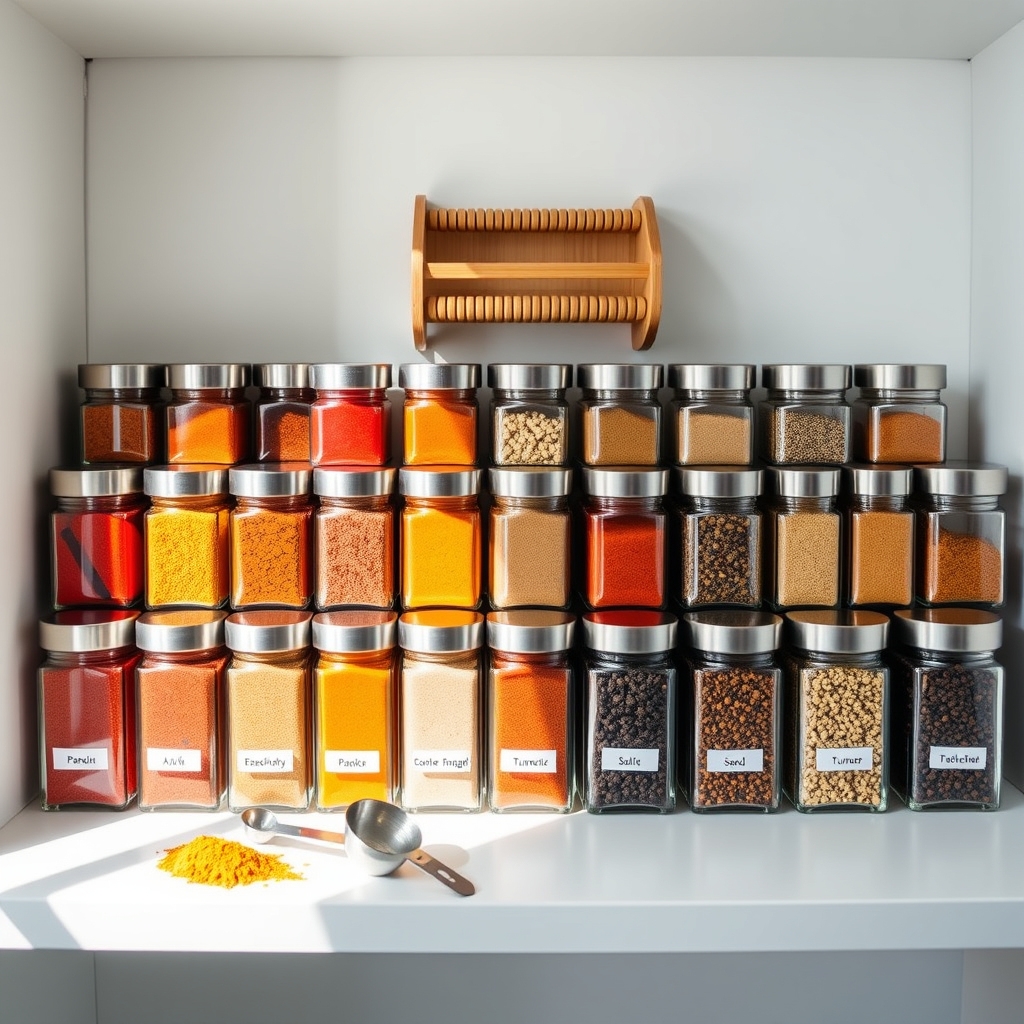
Proper storage containers are the foundation of an organized spice and seasoning collection. When seasonings are stored in mismatched, poorly sealed, or inadequate containers, they can lose potency, become messy, and create unnecessary clutter in your kitchen space.
The right containers not only preserve the quality of your spices but also create a cohesive, aesthetically pleasing look that makes cooking more enjoyable.
Selecting appropriate storage containers impacts both functionality and accessibility. Uniform containers make it easier to stack and arrange seasonings, maximize shelf space, and quickly locate ingredients while cooking.
Well-designed containers with proper seals help protect spices from moisture, light, and air, extending their shelf life and maintaining their flavor integrity.
Required Items:
- Glass or plastic airtight containers
- Labels and marker
- Measuring spoons
- Funnel
- Clean cloth or paper towels
- Small scoop or spoon
- Container size guide
- Storage space measurements
When selecting storage containers, start by measuring your available space and determining the container sizes that will fit. Choose containers made of glass or high-quality, food-grade plastic with airtight seals.
Wide-mouth containers are ideal for easy scooping, while stackable designs maximize vertical space. Transfer seasonings into the new containers using a funnel, ensuring each container is thoroughly clean and dry beforehand.
Label each container clearly with the seasoning name and date of transfer or purchase. For optimal organization, consider dedicating specific container sizes to different types of seasonings.
Use larger containers for frequently used spices like black pepper or garlic powder, and smaller ones for specialty seasonings. Group similar containers together and arrange them based on frequency of use, with everyday items within easy reach.
Additional Tips: Consider investing in containers with built-in shaker tops or dual-opening lids for versatile dispensing options. Keep a few extra containers on hand for new seasonings or bulk purchases.
Clean containers regularly with a dry cloth to prevent residue buildup, and periodically check seals to ensure they maintain their airtight quality. Update labels as needed to maintain legibility and accurate information.
Label Everything Clearly and Consistently
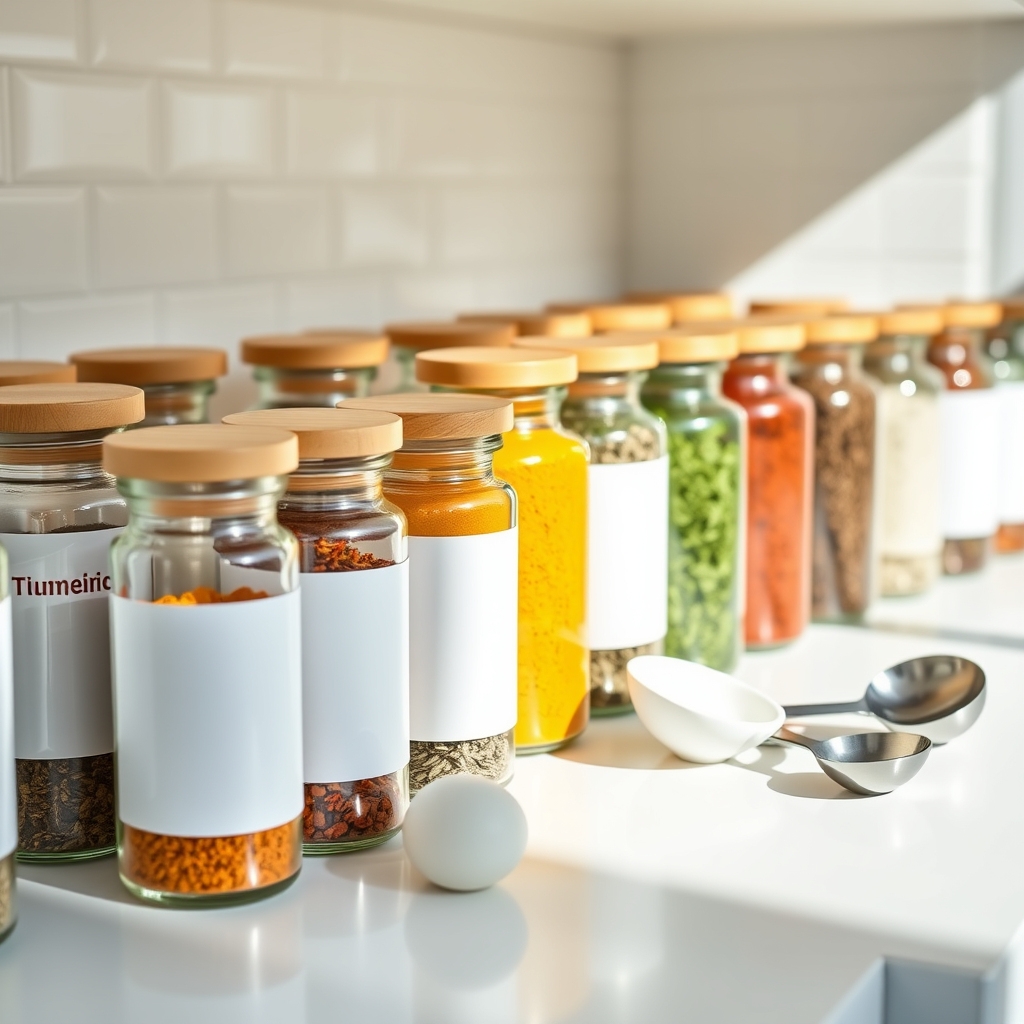
Clear labeling is the foundation of an efficient kitchen organization system, particularly when it comes to seasonings and spices. Without proper labels, it becomes nearly impossible to quickly identify ingredients, leading to cooking delays and potential mistakes that can ruin a carefully planned meal.
Consistent labeling not only saves time during meal preparation but also helps maintain freshness by allowing you to track purchase dates and expiration times. A well-labeled spice collection enables anyone using the kitchen to locate items quickly and return them to their proper places, maintaining organization long-term.
Required Items:
- Label maker or waterproof labels
- Permanent markers
- Clear containers or spice jars
- Measuring spoons
- Funnel
- Clean cloth for wiping containers
- Small sticky notes for temporary labels
- Clear packing tape (if using paper labels)
Start by removing all seasonings from their storage area and wiping containers clean. Transfer spices and seasonings into uniform containers if desired, using a funnel to prevent spills. Create a standardized labeling format that includes the spice name, purchase date, and expiration date.
Position labels consistently on each container – either on the lid for top-down viewing or on the front for shelf viewing. For multi-tier spice racks, place labels where they’re visible when containers are in their intended position.
If using a label maker, select a font size that’s easily readable from your typical cooking distance. When handwriting labels, use block letters for clarity. Apply labels straight and smooth to prevent peeling edges. For frequently used seasonings that require regular refills, consider using erasable labels or removable tape to update dates easily.
Additional Tip: Create a master inventory list of all seasonings with their locations and common usage amounts. Keep this list inside a cabinet door or nearby drawer. When applying new labels, photograph your organization system for future reference, making it easier to maintain the same arrangement when adding new items or reorganizing.
Create Cooking Zones by Usage Frequency
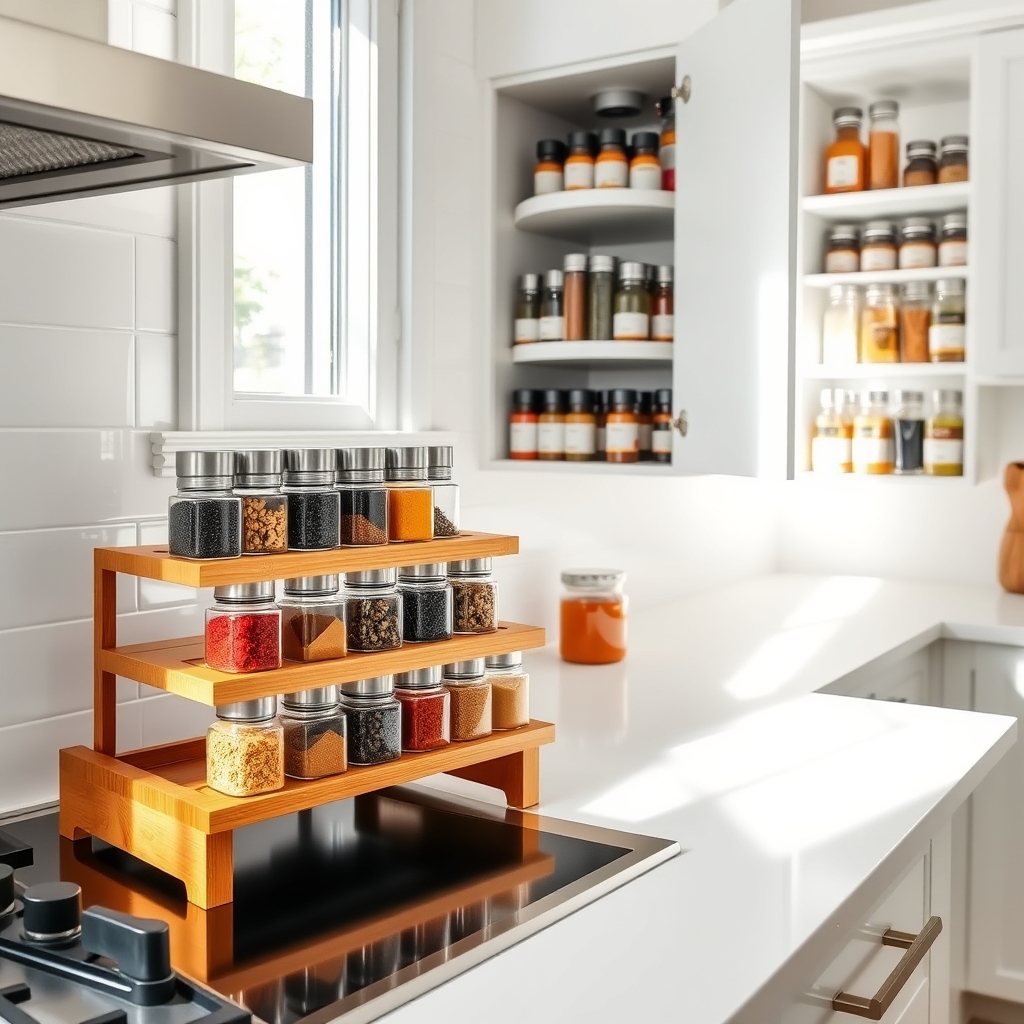
Organizing seasonings by usage frequency is a fundamental step in creating an efficient kitchen workflow. When spices and seasonings are strategically placed according to how often they’re used, cooking becomes more streamlined, reducing preparation time and minimizing frustration during meal preparation.
Creating distinct zones based on usage frequency not only makes cooking more efficient but also helps maintain the quality of your seasonings. Frequently used items remain fresh since they’re used quickly, while rarely used specialty spices can be stored in more protected areas where they won’t be disturbed until needed.
Required Items:
- Clear containers or spice jars
- Labels and marker
- Measuring spoons
- Storage containers or racks
- Drawer dividers or organizers
- Lazy Susan (optional)
- Clear bins or baskets
- Shelf liner
Start by removing all seasonings from their current locations and sorting them into three categories: daily use, weekly use, and occasional use. Daily-use items should be placed in the most accessible location, typically near the cooking area or stovetop. Weekly-use items can be stored in nearby cabinets or on secondary shelves. Occasional-use items should be stored in upper cabinets or less accessible areas, properly sealed to maintain freshness.
For the daily-use zone, arrange items in clear containers at eye level or in easy-reach drawers. Consider using a tiered shelf system or lazy Susan to maximize visibility. Weekly-use items should be organized alphabetically in their designated area, while occasional-use items can be grouped by cuisine type or purpose in storage containers with clear labels.
Additional Tips: Implement a regular review system every three months to reassess your zones, as cooking habits and preferences may change seasonally. Keep a master list of all seasonings and their locations, and date each container when opened to track freshness.
Consider using magnetic strips or door-mounted racks to utilize vertical space in smaller kitchens, and always store seasonings away from heat sources to preserve their potency.
Install Space-Saving Storage Solutions
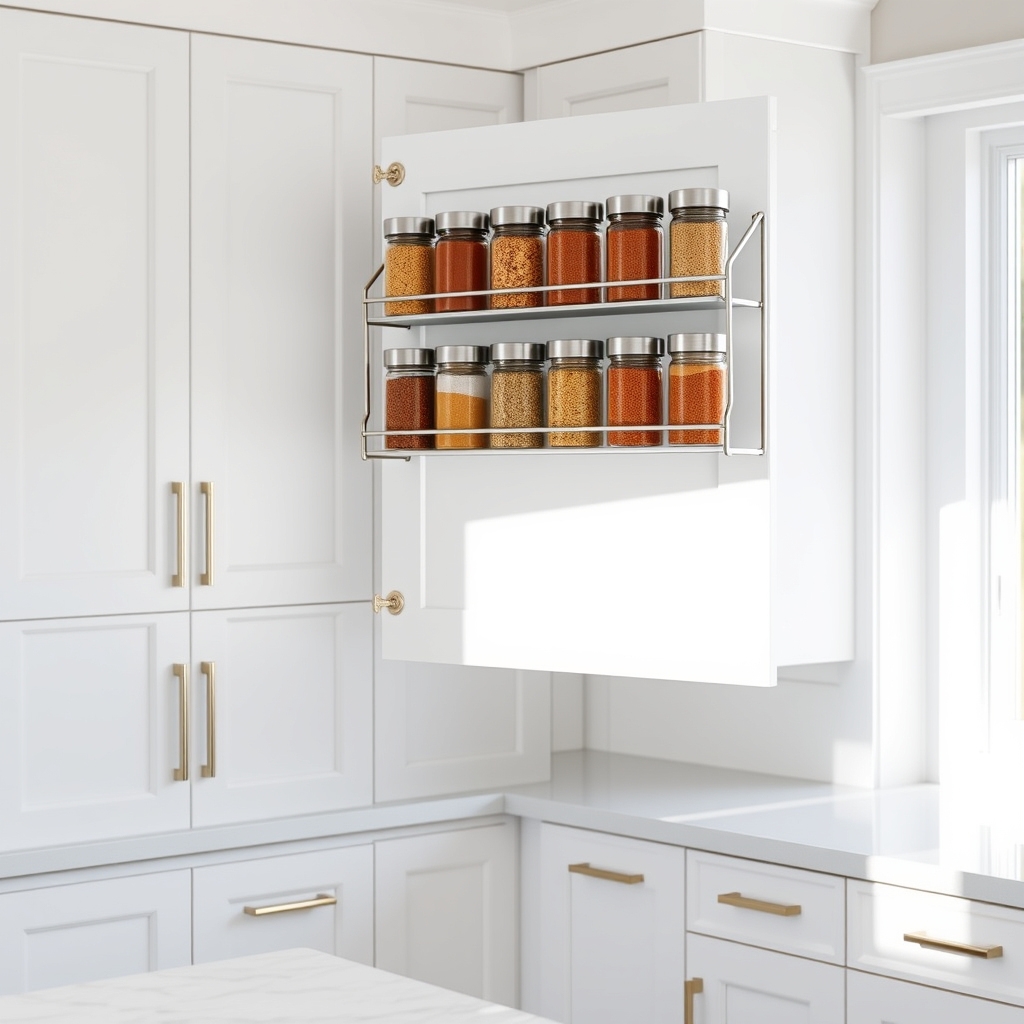
An organized spice storage system is essential for any functional kitchen, as it can dramatically reduce cooking time and prevent the frustration of searching through cluttered cabinets. When seasonings are properly stored and easily accessible, home cooks can efficiently prepare meals without constantly hunting for specific spices or discovering duplicate purchases.
Space-saving storage solutions are particularly valuable in modern kitchens where counter and cabinet space is often limited. These clever organizational systems maximize vertical space, utilize dead zones, and transform awkward corners into practical storage areas, ultimately creating a more streamlined cooking environment.
Required Items:
- Door-mounted spice racks
- Magnetic spice containers
- Drawer organizers or inserts
- Cabinet risers
- Clear storage containers
- Label maker
- Measuring tape
- Screwdriver
- Wall anchors
- Level
Installing space-saving storage solutions begins with measuring your available space and selecting the most appropriate organization system for your kitchen layout. For cabinet doors, mount spice racks using appropriate hardware, ensuring they don’t interfere with shelves when closing.
If utilizing drawer space, install drawer organizers at an angle to maximize visibility and accessibility. For magnetic solutions, secure strong magnets to a kitchen wall or the side of your refrigerator, then transfer spices to magnetic containers.
Consider vertical space by installing tiered shelf risers in cabinets to create multiple levels of storage. Transfer spices to uniform containers for a cohesive look and easier storage. Arrange frequently used seasonings at eye level or in the most accessible locations, while storing occasional-use spices in secondary spaces.
Additional Tips: Regularly audit your spice collection to maintain organization, removing expired items and combining duplicates. Consider implementing a zone system where similar spices are grouped together (baking spices, ethnic seasonings, everyday basics).
Always label containers with both the spice name and purchase date to track freshness and maintain an efficient system.
Sort Spices by Cuisine or Recipe Type
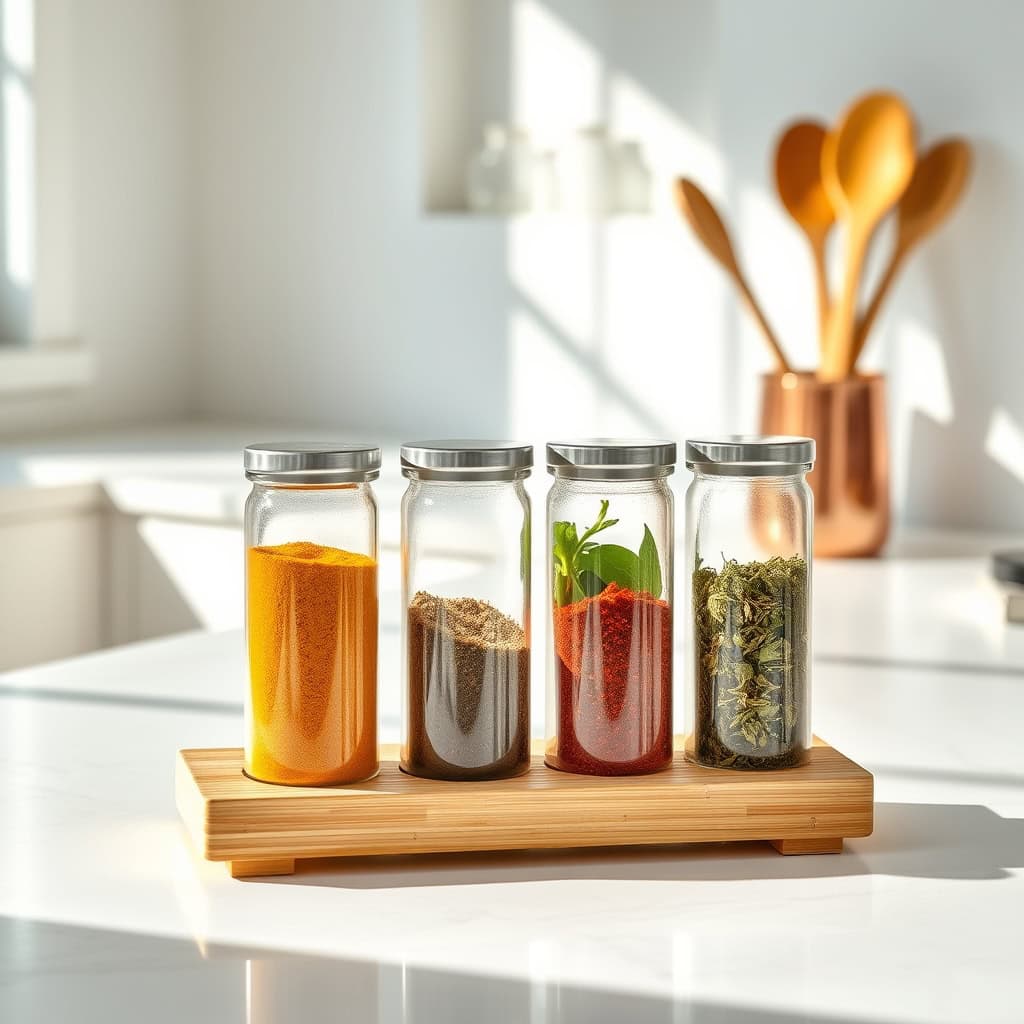
Organizing spices by cuisine or recipe type transforms a cluttered spice collection into an intuitive cooking system that enhances meal preparation efficiency. When spices are grouped according to the types of dishes you regularly prepare, you spend less time searching and more time creating.
This organization method particularly benefits home cooks who frequently prepare specific ethnic cuisines or have go-to recipes they make regularly. Instead of alphabetical organization, this system allows you to grab all needed spices for Italian, Mexican, or Indian dishes in one swift motion, streamlining the cooking process.
Required Items:
- Clear containers or spice jars
- Labels or label maker
- Small baskets or bins
- Shelf liner
- Measuring spoons
- Funnel
- Marker
- Categorized list of spices
- Storage containers for overflow
The organization process starts with emptying all spice containers and grouping them according to primary cuisine types or recipe categories. Create designated zones for Italian (oregano, basil, rosemary), Mexican (cumin, chili powder, Mexican oregano), Indian (turmeric, garam masala, cardamom), and Asian (five-spice, star anise, white pepper) cuisines.
For spices used across multiple cuisines, consider keeping duplicates in each relevant section or creating a “universal spices” category for frequently used items like salt, black pepper, and garlic powder.
Transfer spices into uniform containers, labeling each clearly with the spice name and purchase date. Arrange the containers within their cuisine groups in clear bins or on dedicated shelf space, positioning frequently used categories at eye level.
Consider vertical storage solutions or door-mounted racks to maximize space while maintaining category separation.
To maintain this system effectively, regularly review and update your spice categories based on your cooking habits. Keep a small inventory list noting which spices belong in each category, and check expiration dates every six months.
Consider implementing a color-coding system for different cuisine categories to make identification even quicker during meal preparation.
Maintain Regular Inventory and Freshness Checks
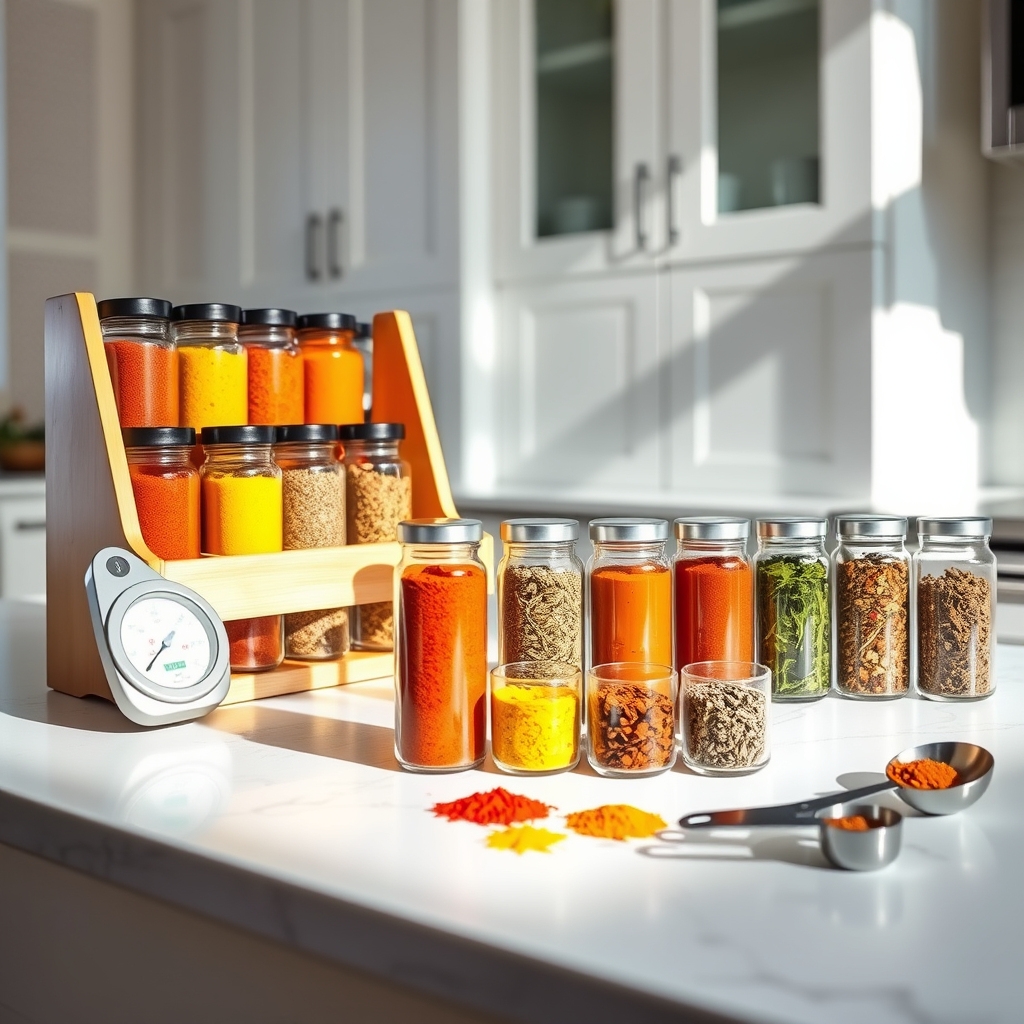
Regular inventory management of kitchen seasonings is crucial for maintaining a well-functioning kitchen and ensuring optimal flavor in your cooking. Expired or stale spices not only take up valuable space but can also compromise the taste of your dishes, making it essential to implement a systematic approach to tracking and maintaining your seasoning collection.
A well-maintained spice inventory saves money by preventing duplicate purchases and helps identify which seasonings need replacement. This organization system also ensures you’re always cooking with fresh, potent ingredients while avoiding the accumulation of outdated or unused spices that can clutter your storage space.
Required Items:
- Inventory checklist or spreadsheet
- Labels and marker
- Calendar or reminder system
- Small container for expired items
- Clean cloth or paper towels
- Storage containers (if replacing old ones)
- Clear plastic bags for bulk spices
- Moisture meter (optional)
To maintain regular inventory and freshness checks, establish a quarterly schedule for comprehensive spice assessment. Start by removing all seasonings from their storage area and checking each container’s expiration date. Create a spreadsheet or checklist documenting each item’s purchase date, expected shelf life, and replacement date.
Group similar items together and arrange them by frequency of use. For items without clear expiration dates, note the purchase date and follow general freshness guidelines: whole spices typically last 4 years, ground spices 2-3 years, and dried herbs 1-3 years.
Before returning items to storage, inspect each container for signs of moisture, clumping, or loss of aroma. Test ground spices by gently crushing a small amount between your fingers – fresh spices should release a strong aroma. Dispose of any items showing signs of degradation or those significantly past their prime. Clean each container’s exterior and ensure lids are properly sealed.
Additional Tips: Implement a “first in, first out” rotation system by placing newer items behind older ones. Use small labels to mark purchase dates on new spices as they enter your collection.
Consider storing frequently used seasonings separate from occasional-use items to streamline cooking processes. Keep a running shopping list of spices approaching their expiration dates to maintain continuous inventory without gaps in your collection.

